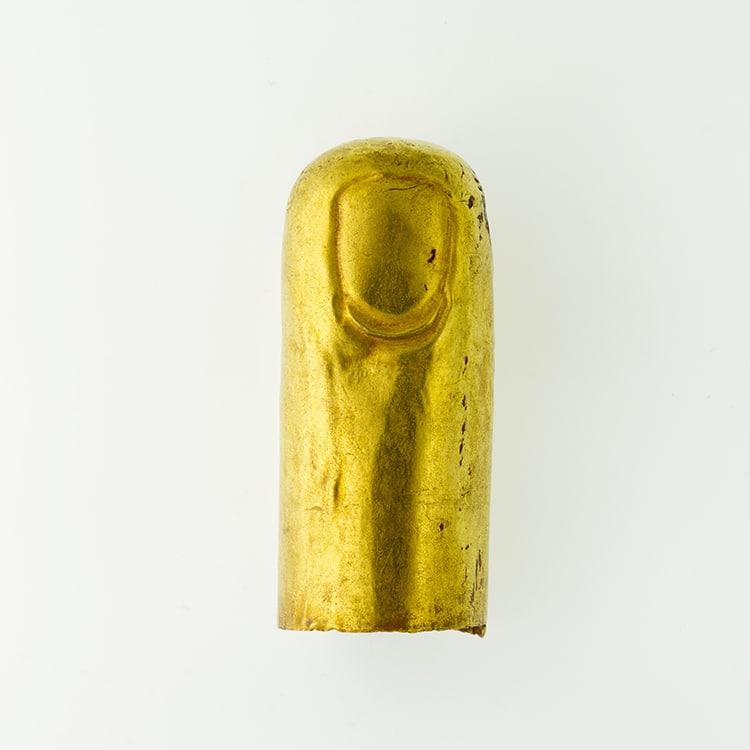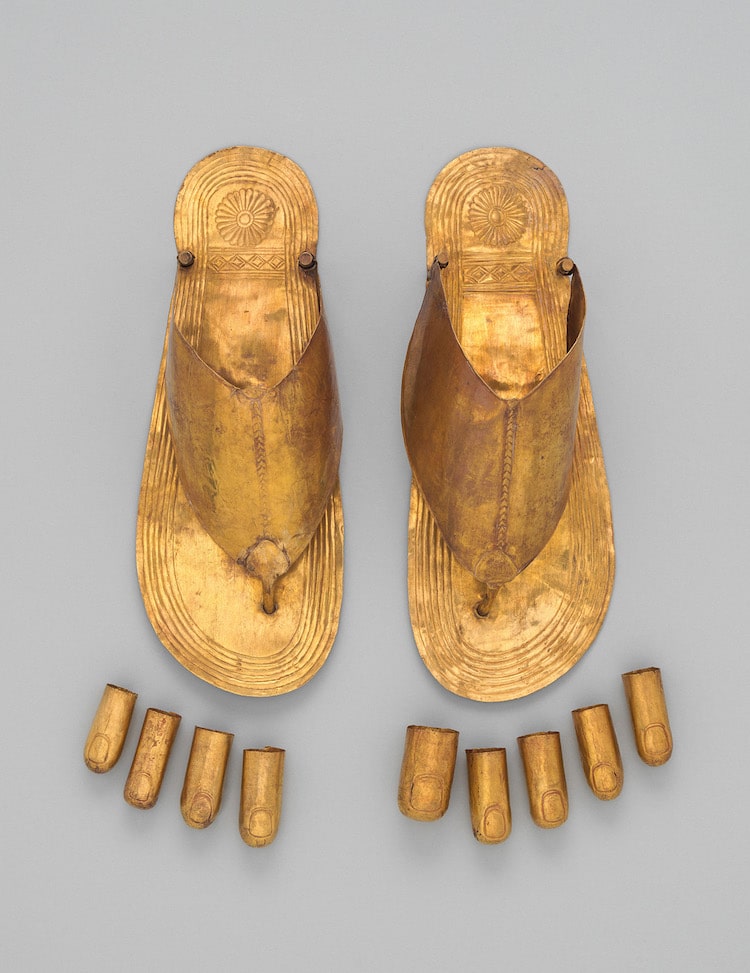Sandals, gold sheet, New Kingdom, circa 14791425 BCE.
Among these items weresandalsnecessary for both the living and the dead.
These funerary sandals could be similar to those work in lifemade of leather typically, or even papyrus.

Sandals, gold sheet, New Kingdom, circa 1479–1425 BCE. (Photo:The Metropolitan Museum of Art, Public domain)
However, the most magnificent sandalsburied with royalswere often crafted in shimmeringgold.
These golden sandals can be viewed in museums today.
Some of the most famous pairs of shimmery shoes come from the tombs of thequeens ofThutmose III.

A gold toe stall, New Kingdom, circa 1479–1425 BCE. (Photo:The Metropolitan Museum of Art, Public domain)
Gold is a soft metal, and not suited to everyday use as shoes.
However, these ordinary concerns fade away as one enters the afterlife.
These are called finger and toestalls.

Egyptian gold sandals and toe stalls, circa 1479–1425 BCE. (Photo: The Metropolitan Museum of Art)
They protected the extremities of the mummy in burial.
According to ancient Egyptian beliefs, the dead were supposed to be entombed as complete bodiessometimes including prosthetic limbs.
Non-royal mummies also were buried with stalls of lesser metals and even clay.

Leather child’s sandals, New Kingdom, circa 1479–1458 BCE. (Photo:The Metropolitan Museum of Art, Public domain)
Today, most stalls date to the18th dynasty of the New Kingdom.
From about 1550 to 1290 BCE, this period includes the famous boy king Tutankhamen.
If average people used average finger and toe stalls, whatsort of sandalswere they buried with?

Pair of sandals from the Burial of Amenhotep, New Kingdom, ca. 1479–1458 BCE. (Photo:The Metropolitan Museum of Art, Public domain)
Braided papyrus and leather were common materials.
A sturdy sole was attached to the foot by straps much like modern sandals.
Sandal makers specialized in crafting these items for the living and the dead.

Sandal Maker, Tomb of Rekhmire, New Kingdom, circa 1504–1425 BCE. (Photo:The Metropolitan Museum of Art, Public domain)
Among the many paintings of everyday life included along tomb walls, these ancient cobblers make appearances.
Today, most extant sandals are funerary in nature, preserved underground in tombs.
The ancient Egyptians were often buried with sandals and toe caps calledstalls.
A gold toe stall, New Kingdom, circa 14791425 BCE.
Egyptian gold sandals and toe stalls, circa 14791425 BCE.
Leather child’s sandals, New Kingdom, circa 14791458 BCE.
Sandal Maker, Tomb of Rekhmire, New Kingdom, circa 15041425 BCE.